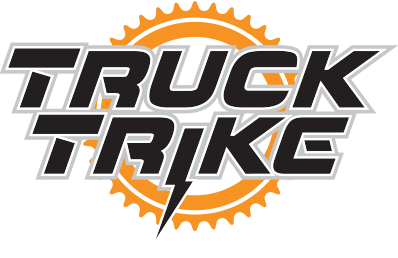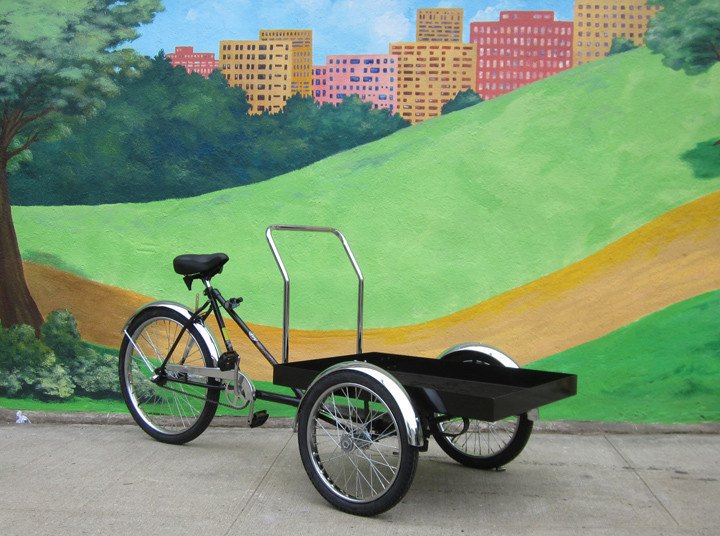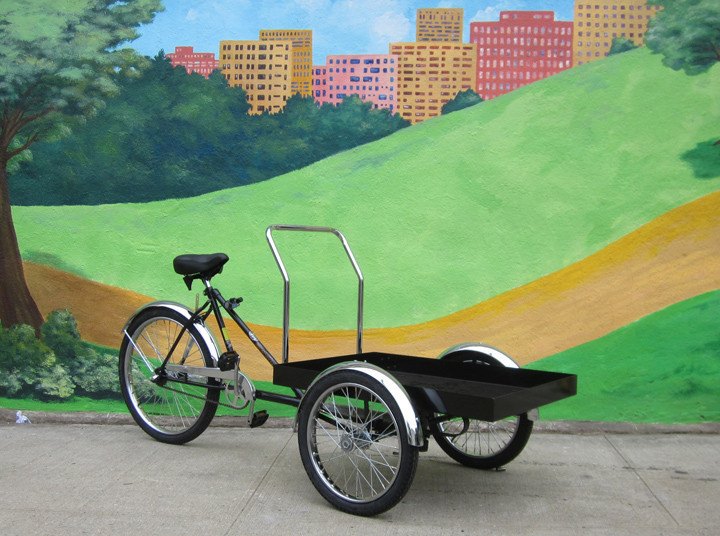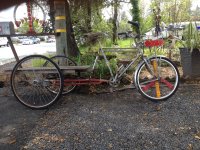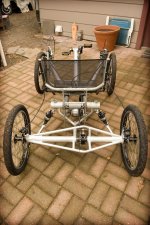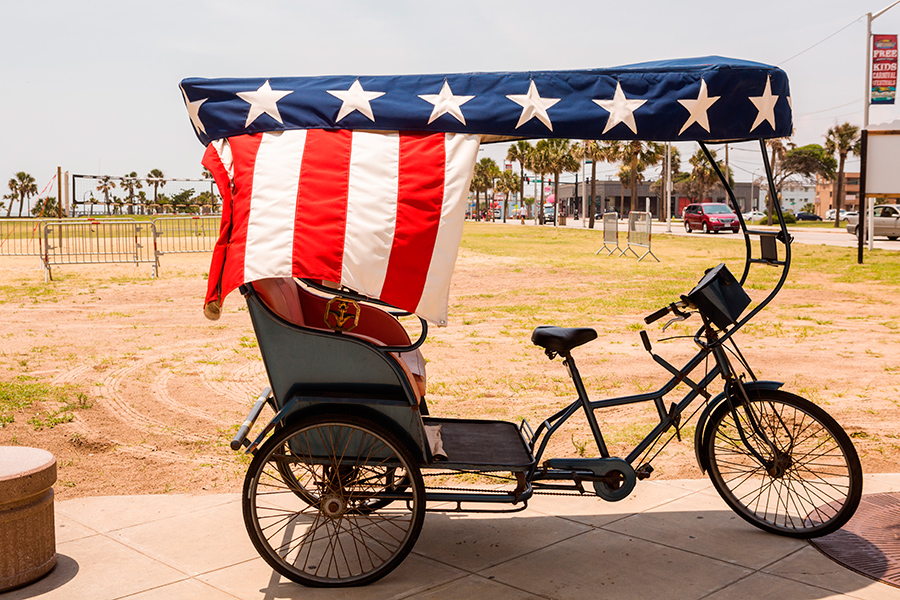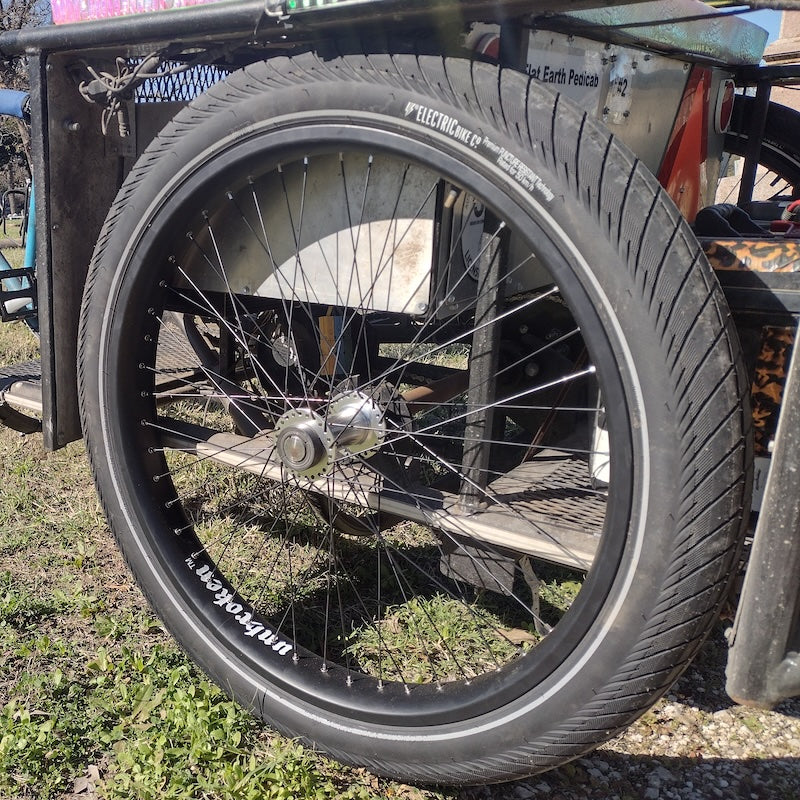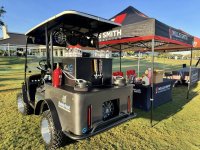Pedicab wheels are still standard spoked/laced wheels (all the ones I've seen so far, anyway). But as Chalo points out (and I did as well earlier), they mount to a live-axle, meaning the axle runs all the way from one wheel to the other, and the axle itself spins, and it goes either thru the cargo area or under it.Others have suggested looking at more robust wheels such as those for a pedicab or even scooter or motorcycle wheels. If I can make it work, I do like the classic look of a spoked/laced wheel, but if the engineering doesn’t support it, I’ll have to look at other options.
You *could* design it so the axle is not all the way thru, but I'm not sure what kind of engineering it would involve for that kind of weight. On my Mk II SB Cruiser plan, I was going to modify the hubs to use a carrier that fit a spindle on a stub axle mounted to the sides of the trike's cargo area frame, so I could easily pull them off for roadside replacement, and the carrier would have a sprocket on it driven by chain (or whatever) from a motor somewhere on the trike (there are various designs with varying complexity for how to get the power to the motor, because for my setup it's more important to have a clear cargo area and as low a COG as possible than it is to have a simple drivetrain, or even "efficient").
It's not the voltage itself, it's the total power required. That's something you'll have to work out for your specific conditions, terrain, weight, speed, acceleration desired, etc. (ebikes.ca has simulators that can help with guesstimating it).You indicated a 48V system might not work. Are 72V or 96V systems available for ebike systems? I can go with any voltage as long as I can find a battery, an appropriate (and compact enough) inverter and it still works with the etrike motors and controls.
It's possible, however, that it will be easier / cheaper to get the power required with a higher voltage system just because power (watts) is volts x amps, and a lower voltage takes more current to do the same thing.
But...the relationships between all the various parts of the system are fairly complex, so experimenting with the simulator may give you a better idea of how it works, and make it easier to choose.
As long as the coolness is more important than other factors, there's nothing wrong with a cool machine to do a job.I realize my etrike concept might be pushing the bounds of practicalness, but I want to verify if it’s doable before I consider switching gears to looking at vehicle types. There’s something about the coolness factor with vending bikes.
As for practicality, you can do a lot with bicycle parts, but there are limits to them. If you are never going very fast (walking speeds), and you don't have up or downhills to deal with, you may get away with lesser parts (brakes, motor, etc) than otherwise, for instance.
The SB Cruiser heavy-cargo-hauler trike can haul quite a bit, including itself, but your load would probably be past it's safe limits even split between it and the Mk IV trailer. Even just the piano hauling kept my max down to about half the speed I would normally go, and less when quick braking would be more of a concern; the front single mechanical disc brake can only take so much, and the same for the regen braking in the motors--enough braking in too short a time and they overheat and can fail.
Same for acceleration--if I have to accelerate quickly, it takes more power than doing it gradually, and it heats up both the motor and controller.
Last edited:


